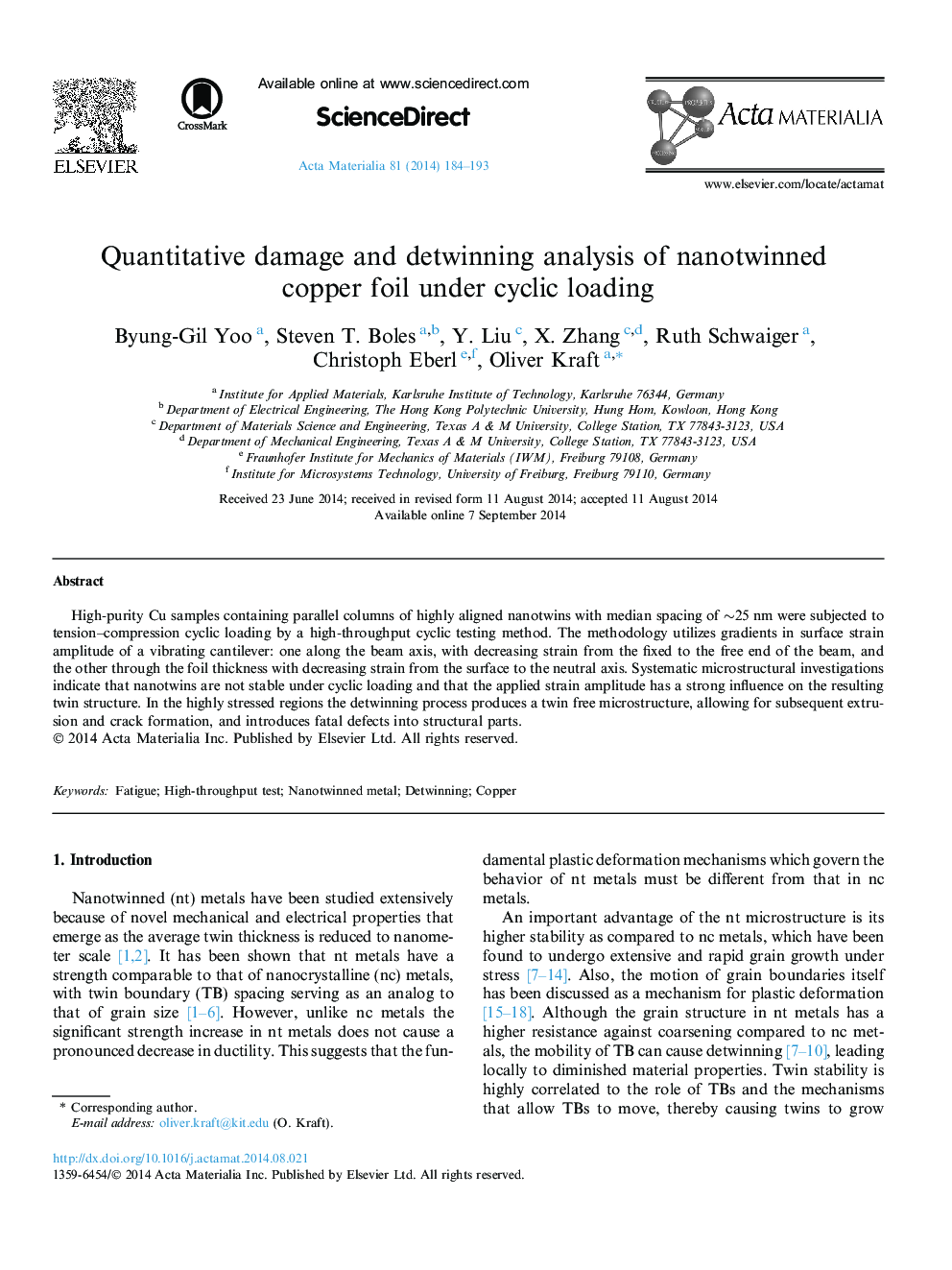| Article ID | Journal | Published Year | Pages | File Type |
|---|---|---|---|---|
| 1445609 | Acta Materialia | 2014 | 10 Pages |
High-purity Cu samples containing parallel columns of highly aligned nanotwins with median spacing of ∼25 nm were subjected to tension–compression cyclic loading by a high-throughput cyclic testing method. The methodology utilizes gradients in surface strain amplitude of a vibrating cantilever: one along the beam axis, with decreasing strain from the fixed to the free end of the beam, and the other through the foil thickness with decreasing strain from the surface to the neutral axis. Systematic microstructural investigations indicate that nanotwins are not stable under cyclic loading and that the applied strain amplitude has a strong influence on the resulting twin structure. In the highly stressed regions the detwinning process produces a twin free microstructure, allowing for subsequent extrusion and crack formation, and introduces fatal defects into structural parts.
